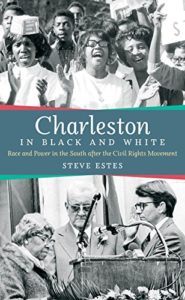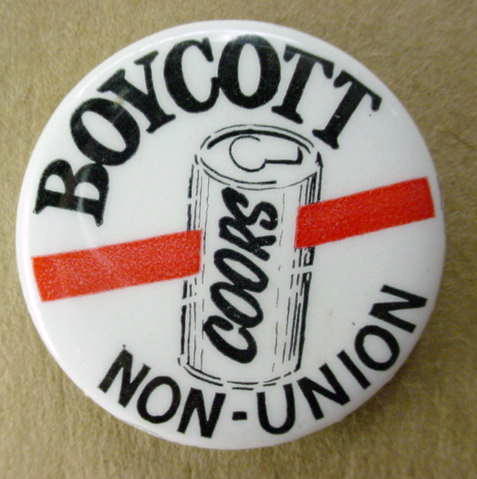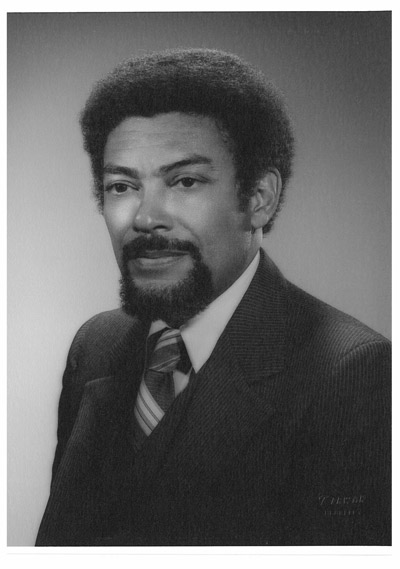Author: ddunham
George P. Shultz: First Oral History for Economist Life Stories
It’s with great anticipation that we announce “Problems and Principles: George P. Shultz and the Uses of Economic Thinking,” the first oral history in a new project called Economist Life Stories, featuring in-depth interviews with some of the most influential economists of the twentieth century. George Shultz is perhaps best known for his public service. He was appointed Secretary of Labor, the first Director of the Office of Management and Budget, and Secretary of the Treasury during the Nixon Administration, and later became Secretary of State during the Reagan Administration. But before that, he was professor of economics and dean of the Graduate School of Business at the University of Chicago. Mr. Shultz talks at length about his years at Chicago, but a thread throughout this life history is the economist’s way of thinking about and understanding the world. Most importantly, from his military service in World War II to his far-ranging policy analysis since he left public life, Mr. Shultz speaks of the importance of moving past ideological positions to work with others to solve concrete problems.
The interviews were conducted by Paul Burnett at the Hoover Institution in sessions over four days in September of 2015. Hodson Thornber and Paul Burnett organized the project with Toni Shears of the Becker Friedman Institute, with important support from an advisory group of historians and economists.
Financial support for this work was provided by Richard Elden, a member of the Becker Friedman Institute Council, whose contribution is gratefully acknowledged.
Although this project focuses on the leaders and students of the University of Chicago Department of Economics, the Graduate School of Business, and the Law School, we hope to add more stories from economists around the world as the project expands. In December, we will launch the second interview in this project, with economist Arnold Harberger.
New Oral History Research Series: “Making Sense of My World Through Oral History” by David Montejano
Date: Monday November 14, 2016
Time: Noon to 1:15pm
Location: Oral History Center Conference Room, Bancroft
New Oral History Research Series: “Making Sense of My World Through Oral History” by David Montejano
The Oral History Center of The Bancroft Library throughout the academic year hosts occasional presentations of the most current and interesting oral history-based research being conducted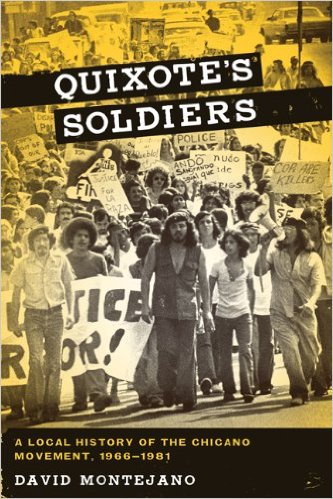 today. In this second “brown-bag” presentation of the year, Berkeley Ethnic Studies Professor David Montejano will be speaking about his decades-spanning work as a historian and sociologist and the role oral history has played in his work. Dr. Montejano’s major areas of interest include Comparative and Historical Sociology, Political Sociology, Social Change, Race and Ethnic Relations, and Community Studies. A native of San Antonio, he received a B.A. from the University of Texas at Austin and two Masters and a Ph.D. from Yale University. Dr. Montejano is the author of the prizewinning historical overview, Anglos and Mexicans in the Making of Texas, 1836-1986 (Austin: Univ of Texas Press, 1987; 7th Printing, 1999). The book also has been translated and published in Mexico (Mexico City: Editorial Alianza, 1991). He has authored numerous scholarly articles and book chapters, and edited Chicano Politics and Society in the Late Twentieth Century (Austin: Univ of Texas Press, 1999). His most recent publication is Quixote’s Soldiers: A Local History of the Chicano Movement, 1966-1981 (Univ of Texas Press, 2010).
today. In this second “brown-bag” presentation of the year, Berkeley Ethnic Studies Professor David Montejano will be speaking about his decades-spanning work as a historian and sociologist and the role oral history has played in his work. Dr. Montejano’s major areas of interest include Comparative and Historical Sociology, Political Sociology, Social Change, Race and Ethnic Relations, and Community Studies. A native of San Antonio, he received a B.A. from the University of Texas at Austin and two Masters and a Ph.D. from Yale University. Dr. Montejano is the author of the prizewinning historical overview, Anglos and Mexicans in the Making of Texas, 1836-1986 (Austin: Univ of Texas Press, 1987; 7th Printing, 1999). The book also has been translated and published in Mexico (Mexico City: Editorial Alianza, 1991). He has authored numerous scholarly articles and book chapters, and edited Chicano Politics and Society in the Late Twentieth Century (Austin: Univ of Texas Press, 1999). His most recent publication is Quixote’s Soldiers: A Local History of the Chicano Movement, 1966-1981 (Univ of Texas Press, 2010).
Remembering Judith Dunning, oral historian of the Richmond community
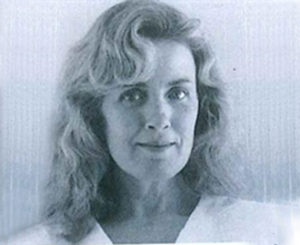
Judith K. Dunning, an oral historian whose mission was to document the undocumented, passed away on September 25, 2016, after a long illness. Judith came to the Regional Oral History Office in 1982 with the idea for an ambitious oral history project. While taking a documentary photography class where she concentrated on the Richmond waterfront, she had begun to hear stories about Richmond’s quiet prewar life, organized around its port, the Ford factory, and the Chevron refinery, and its remarkable transformation with the coming of the Kaiser shipyards in World War II. She envisioned a project to document this history, drawing on her experience recording interviews with textile mill workers in Lowell, Massachusetts, and shipyard workers at the Charlestown Navy Yard for the National Park Service.
Judith was interested in recording the stories of people who do not leave written records, who remain undocumented in traditional historical archives and publications. Launching and carrying out her project required difficult fundraising and substantial community outreach. She immersed herself in the community, meeting both longtime residents from the prewar years and migrants from the South and Midwest who came to work in the shipyards. She slowly built connections and found her interviewees from many walks of life: fishermen, ferry operators, cannery workers, welders, sheet metal workers, painters, and iron workers.
To read Judith’s interviews is to immediately realize the deep humanity and respect for her narrators that she brought to her work. She listens. She encourages a deeper story with careful prompts and obvious interest in the details of their lives and work. She respects their opinions and memories of how things were. Sometimes she takes a narrator to the site of a former workplace. She goes fishing with the Ghio brothers and whale watching with the one of the last whalers to work out of San Francisco Bay. Over time, she observes a transformation in how her interviewees view their relationship to history. She notes in the project preface that many at first asked “What is important about my life?” but soon they became actively involved in research, collecting photographs, and recommending others to be interviewed. She comments, “‘On the Waterfront: An Oral History of Richmond, California’ became their project, with a life of its own.” One of her interviewees was buried with a copy of his oral history on his chest.
The historical enterprise did not end for Judith with the publication of the oral history transcripts. She envisioned a larger role in the community for these stories. She wrote “Boomtown,” a play based on the oral histories, which depicted Richmond’s transformation, retaining the language and flavor of the interviews. “Boomtown” was produced by Tale Spinners Theater and toured Bay Area senior centers, schools, and museums in 1989. An accomplished photographer herself, she collected photographs and artifacts from her interviewees, creating exhibits featuring text from the oral histories for numerous community events in the Bay Area throughout the 1980s. One of her most innovative ideas was to draw on the oral histories to create books for adult literacy programs. With funding from the US Department of Education, she selected text from the Richmond project oral histories and fashioned narratives of interest to adult literacy students in Richmond’s Literacy for Every Adult program. The next step was to interview some of the literacy students themselves and let them assist in creating books from their own narratives. The process was transformative for the student-interviewees, while offering material that spoke to their fellow adult learners.
Judith’s work in the Richmond community helped build widespread interest in the complex history of this waterfront city before, during, and after World War II. When the National Park Service sought a site for a national historic park to showcase the home front during the war, the city of Richmond was the final choice. And the Regional Oral History Office, now the Oral History Center of the Bancroft Library, became the logical home for a multiyear project, sponsored by the Park Service, that has produced more than 250 interviews, in the “Rosie the Riveter World War II American Home Front” series. In 2001, Judith returned to the office after several years’ respite, conducting some of the Rosie interviews as well as oral histories with California dairymen and others.
In preparing this remembrance of Judith, I revisited her interviews and her interview histories. Once again, I was struck by her strong connection to her narrators, her genuine humanity, and her wonderful appreciation of life and the humor of our existence. I offer this quote from her interview history for “The Ghio Brothers: Fishermen by Trade” as a prime example of all these qualities, as well as of the lasting impact of her work:
I had told the Ghio family over the phone that I tape one person at a time, preferably in a quiet location. We agreed that Dominic Ghio would be the first narrator. On the day of the interview I rang the doorbell and sister Louise Montalbano answered looking at me with a mixture of caution and curiosity. She summoned brothers Tony and Dominic Ghio, who were on the porch repairing fishing nets. Dominic and I sat at the dining room table. My suggestion to interview him alone was not even considered. Older brother Tony and sister Louise took what was to become their regular stance at our weekly meetings. They stood directly over us. What I had not realized was that they were in a relay position. When I asked Dominic a question, Tony and Louise would dash off in separate directions to retrieve family items to illustrate the story. Sometimes Dominic would jump up from his chair to join in the search, dragging his microphone behind him. During the course of the interviewing I had seen family portraits in ornate frames, crab nets from the 1920s, a charco-stove from their Monterey fishing boat, the Natale, and hand-carved weaving tools…
On summer mornings at Point San Pablo Yacht Harbor, I joined the Ghio brothers on shrimping trips to China Camp, always bringing a camera and my sea legs. It was an opportunity to experience the beloved Natale first-hand and to see Tony and Dominic in action. I realized that the Ghios’ story needed to be presented visually with a strong hands-on element if people were going to get a glimpse into the occupation of a fisherman. I called Kathleen Rupley, curator of the Richmond Museum, and it was the beginning of a collaboration between the Museum staff, an oral historian, and the Ghio family. The result of our work was an exhibition, “Fishermen By Trade: On San Francisco Bay With the Ghio Brothers,” which ran at the Richmond Museum for six months in 1988…During the course of the oral history project and the fishing exhibition the Ghio brothers became local celebrities. They were invited to demonstrate traditional net weaving at the Richmond Museum; Richmond’s Festival by the Bay; Oakland Seafest; and the San Francisco Craft and Folk Art Museum. They are among the last of the San Francisco Bay fishermen who still practice this craft…I developed a real affection towards the Ghio family and was caught off guard when Tony Ghio died suddenly last year. A consoling factor is that Tony did something he loved for his entire life. The brothers never stopped fishing. At the end of the interviewing sessions, when I asked them what they like to do in their spare time, without a moment’s hesitation, they said, “We like to go fishing.”
Judith is survived by her son, Michael Dunning Liebman, and her four brothers and sisters and their spouses, children, and grandchildren. Her beloved husband, James Andrew Liebman, died in 2010. A Celebration of Life for Judith will be held on October 30, 2016, from 11 am to 3 pm, at Saint Mary’s College of California in Moraga.
Ann Lage
Interviewer emeritus
Oral History Research Series: “Too Proud to Whitewash: Race and Power in Charleston and the South”
Time: Noon to 1:15pm
Location: Oral History Center Conference Room, The Bancroft Library
The Oral History Center of The Bancroft Library throughout the academic year hosts occasional presentations of the most current and interesting oral history-based research being conducted today. In this first “brown-bag” presentation of the year, Sonoma State historian Steve Estes will discuss his recently published book, “Charleston in Black and White: Race and Power in the South since the Civil Rights Movement” (University of North Carolina Press, 2015) and the key role oral histories play in it.
Patricia J. Greene: Recombinant DNA Technology in Herb Boyer’s UCSF Lab in the 1970s
Now available online, an oral history with Patricia Greene: Recombinant DNA Technology in Herb Boyer’s UCSF Lab in the 1970s. Interviewed by Sally Smith Hughes in 2006, this interview in the series on bioscience and biotechnology in Northern California documents Greene’s contributions in the Boyer lab to making recombinant DNA technology in the 1970s more efficient and productive.
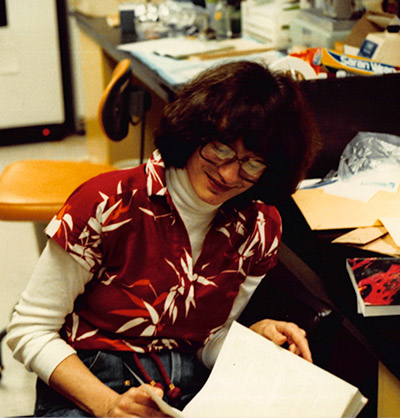
Ian Carmichael: A Life in Geology, Teaching, Research, and Administration
We are pleased to announce the completion of our oral history with Ian S. E. Carmichael. Carmichael, who passed away in 2011, was a professor of earth and planetary science at the University of California, Berkeley, and an expert on volcanoes and the underground processes that shape them. Carmichael was the chair of the UC Berkeley Department of Geology and Geophysics from 1972-1976 and 1980-1982. He was associate dean for research in the Office of Provost for Research (1986-2000), associate dean for academic affairs in the Graduate Division (1985-2000), and acting director of the UC Botanical Garden (1997-1998). He was director of UC Berkeley?s Lawrence Hall of Science from 1996 to 2003.was a Professor of Earth and Planetary Science at UC Berkeley. Read his obituary here.
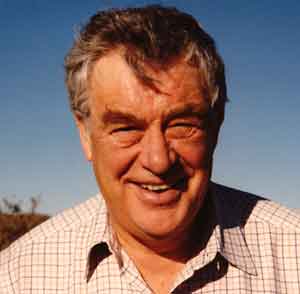
New Oral Histories in the Global Mining and Materials Research Project
We are proud to announce eleven new interviews for the Global Mining and Materials Research Project, which focuses on key transitions in technology, policy, and geopolitics that have brought mining to its current state worldwide. These eleven new interviews feature leading metallurgists, software engineers, experts in mine health and safety, executives in the fields of industrial minerals, coal mining, and hard-rock mining, and an executive director of a mining association. We are most grateful to these narrators for taking time out of a busy schedule to speak to us about the evolution of the mining industry over the past forty years.
Acknowledgements
These interviews were funded with support from the American Institute of Mining Engineers, Metallurgists, and Petroleum Engineers (AIME), the Society for Mining, Metallurgy, and Exploration (SME), the Association for Iron & Steel Technology (AIST), The Minerals, Metals, & Materials Society (TMS), and the Society of Petroleum Engineers (SPE).
David Sickler: A Lifetime as Labor Organizer, AFL-CIO Leader and Champion of Immigrant Workers
David Sickler: A Lifetime as Labor Organizer, AFL-CIO Leader and Champion of Immigrant Workers
David Sickler has a long and distinguished career as a labor organizer, as a leader within the AFL-CIO and as an innovator of efforts to organize immigrant workers. At 18, he began work on the bottling line at Coors Brewing Company in Golden Colorado, soon becoming a shop steward and then business manager of Brewery Workers Union, Local 366. Following a strike in 1977, AFL-CIO President George Meany picked Sickler to head the national boycott of Coors Beer, a struggle that lasted ten years and led to a successful resolution, and became a model campaign emulated by other unions.
In 1986 Sickler was appointed AFL-CIO Regional Director as well as the Executive Director of the Los Angeles-Orange Counties Organizing Committee. Following passage of the Immigration Reform Act in 1988, he established the Labor Immigrant Assistance Project and the AFL-CIO Immigrant Workers? Association. Subsequently he was the senior labor advisor to Los Angeles Mayor Antonio Villaraigosa, as Commissioner of Public Works, and as Executive Director of Employment Relations at the L.A. Department of Water and Power.
Beginning in 2009 Sickler was Southern Regional Director of The California State Building and Construction Trades Council. He has served as Chair of the UCLA Center for Labor and Research Advisory Committee and as a member of the Board of Directors of the Pat Brown Institute.
Dick Teets: The New Steel Industry in the United States 1975-2010
New to our Global Mining and Materials Research Oral History Project, Dick Teets: The New Steel Industry in the United States 1975-2010
Conducted by Paul Burnett in 2014, Regional Oral History Office, The Bancroft Library, University of California, Berkeley, 2015.
Dick Teets, Jr. is Executive Vice President of Steel Dynamics, Inc. and Chief Operating Officer for all of the company’s steelmaking divisions. He began his career in the late 1970s as a mechanical engineer for J&L Steel, which later became LTV. In the late 1980s, he joined Nucor, where he supervised the construction of the first thin-cast slab steel plant, which was one of the first large-scale mini-mill plants in the United States. He was a participant in early experiments in partnerships with Japanese steelmakers in the US, and was a witness to the accelerating encroachment of the newer mini-mills on the markets of the traditional “Big Steel” companies. In the early 1990s, Mr. Teets co-founded his own company with former executives at Nucor, called Steel Dynamics, Inc. He helped lead the company through a long period of rapid growth, helping to build and manage the capacity for manufacturing numerous different types of steel products. Today, Steel Dynamics is the fifth largest steel company in the United States.
https://www.youtube.com/watch?v=rGHoQkAlVf0
For over twenty years, the Regional Oral History Office (ROHO) produced in-depth oral histories of members of the mining community, under a project called “Western Mining in the Twentieth Century,” which was overseen by Eleanor Swent. The 104 interviews in the project covered the history of mining in the American Southwest, Mexico, South America, and Australia from the 1940s until the 1990s.
ROHO has recently changed its name to the Oral History Center of the Bancroft Library, and with that change we proudly announce a new project entitled “Global Mining and Materials Research,” which will focus on key transitions in technology, policy, and geopolitics that have brought mining to its current state worldwide.
New Releases Wednesday: Cornelius L. Hopper: A Career in Medicine and Higher Education Administration
Cornelius L. Hopper. M.D. is the Emeritus Vice President for Health Affairs for the University of California System. Born in Oklahoma, Dr. Hopper received his AB and MD degrees, respectively, from Ohio University in Athens, Ohio, and the University of Cincinnati College of Medicine. He served as a Battalion Surgeon in the Marines from 1961 to 1963. Later, Dr. Hopper trained in Internal Medicine at Marquette University and subsequently Neurology at the University of Wisconsin, Madison, where he remained on the Neurology faculty until 1971. In 1971 Dr. Hopper accepted the directorship of the John A. Andrew Memorial Hospital at Tuskegee Institute in Alabama and an appointment as the Institute’s Vice President for Health Affairs. In 1979 Dr. Hopper was recruited to the University of California System as Special Assistant for Health Affairs to the University’s President and in 1983 was promoted to Vice President. For twenty years, until his retirement in 2000, he served as the senior administrative officer for the nation’s largest university health sciences system, encompassing fourteen health professions schools on six campuses, an enrollment of thirteen thousand students, and a budget of over $3 billion. Dr. Hopper and his wife Barbara have been married for over 50 years, and have three children. His oral history transcript is now available online.
